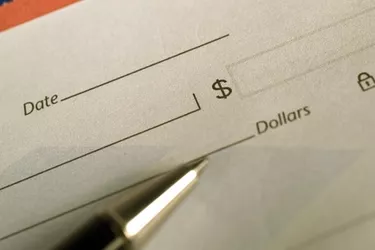
Whether you're placing an order for new checks, filling out a bank deposit slip or setting up automatic payments, a bank customer needs to provide accurate account and routing number information. Determining the difference between each number prevents delays and problems with your transactions. The American Bankers Association assigns each bank a routing number which identifies it exclusively. The bank account number refers to your personal checking or savings account number.
Step 1
Examine the bottom left corner of the check. Locate the Magnetic Ink Character line. This is the series of numbers on the bottom of your personal check. Normally, the line is split into three individual sets of numbers.
Video of the Day
Step 2
Locate the first set of nine digit numbers. This set is known as the bank routing number. This number set always begins with the numbers one, two or three. Routing numbers are unique to each bank and are used to identify financial institutions.
Step 3
Search for the second set of numbers on the check. This set—usually a group of eight or nine numbers—is known as the account number which is always the second set of numbers. Account numbers are used to personalize individual accounts such as a checking or savings account.
Step 4
Identify the third set of numbers. This is the check number that is also listed on the check in the top right corner. These numbers are used for tracking information and financial accounting procedures.
Video of the Day